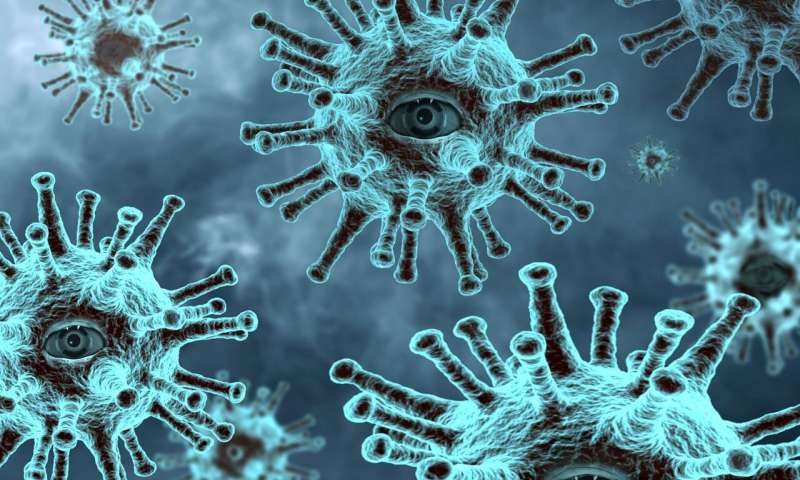After an international mission to China turned up more questions than answers about the pandemic origins, the WHO is evaluating how to move forward through a diplomatic quagmire to solve the mystery.
Determining how the virus that causes COVID-19 first began spreading among humans is seen as vital to preventing future outbreaks.
But a long-delayed report, drafted by the team of international experts sent to Wuhan at the start of the year and their Chinese counterparts, drew no firm conclusions and called for more investigation.
The World Health Organization’s emergency committee this week urged the “rapid implementation” of the report recommendations for phase two probes.
But while the WHO and countries worldwide agree further investigation is needed, a fight is brewing over what the next phase of inquiry should entail and where it should take place.
It took more than a year after COVID-19 first surfaced in Wuhan in December 2019 to get the international expert team to China, and Beijing appears intent on seeing the next phase focus elsewhere.
“We hope that other relevant countries will cooperate closely with WHO experts in a scientific, open, transparent and responsible manner, as China has done,” Chinese foreign ministry spokeswoman Hua Chunying told reporters on March 31.
‘Absurd’
But critics question the transparency around the first mission, called for in a resolution passed last May by WHO member countries, and insist far more investigation in China is needed.
“At a very basic level, there is unanimity in terms of that the phase two should take place in China,” a senior Western diplomat in Geneva said, requesting anonymity.
Beijing was the only party voicing “the view that somehow the next phase should be in any other region,” the diplomat added.
“The idea that the next phase should not focus primarily on China is absurd,” US geopolitical expert Jamie Metzl told AFP.
Metzl, one of 24 scientists from the US, Europe, Australia and Japan who published an open letter earlier this month demanding a more comprehensive investigation, described the first mission and resulting report as “deeply flawed”.
Critics charge the mission was heavily orchestrated by Beijing and that the report focused disproportionately on theories favoured by China.
“The oversized role that the government of China played in this process, I think was problematic,” the Western diplomat said.
Ranking hypotheses
While the international and Chinese experts provided no clear answers on the origins of the pandemic, they ranked a number of hypotheses according to how likely they believed they were.
The report said the virus jumping from bats to humans via an intermediate animal was the most probable scenario, while it dismissed a theory involving the virus leaking from a laboratory as “extremely unlikely”.
For basically every area investigated it said more study was needed.
Except one: the lab-leak theory—a US favourite under former president Donald Trump that has always been flatly rejected by China.
After the report was released, WHO chief Tedros Adhanom Ghebreyesus however insisted all theories remained on the table.
In particular, he said the probe into Wuhan’s virology labs was not “extensive enough” and that he was prepared to launch a fresh investigation.
The scientists behind the open letter also called for proper investigation of the lab-leak theory, emphasising that just 440 words of the report were dedicated to discussing and dismissing it.
They highlighted that the very terms of reference for the mission, negotiated with Beijing, stated the task was to “identify the zoonotic source of the virus”.
Effort to ‘discredit China’
“The Chinese did a fantastic job of making clear very subtly that this study mission was about looking at the zoonotic origins,” Metzl said.
While this was “one very credible hypothesis, what we should have been looking at is the origins of the pandemic,” he said.
“When you start with the frame of the zoonotic origins of the virus, you start with a conclusion.”
Chinese foreign ministry spokesman Zhao Lijian slammed Metzl and the other letter signatories, saying their aim was “obviously to mount pressure on the WHO and the joint mission”.
He maintained it was the US and other countries, not Beijing, that had politicised the mission to “discredit China”.
“By blatantly questioning the independence and research conclusions of real scientists, they will not only cripple international cooperation on origin tracing, but also undercut global anti-epidemic efforts,” he warned.
Even as all sides stress the urgency of solving the origins mystery, there seems to be little progress towards the next steps.
A WHO team is currently reviewing the report recommendations and “will prepare a proposal for the next studies that will need to be carried out,” a spokesman said.
But he did not say when the proposal would be presented to Tedros or a new mission could be expected.
In their letter, the scientists urged countries to pass a fresh resolution during next month’s World Health Assembly demanding a truly “unrestricted” and full international investigation.
“Any process that doesn’t fully examine the possibility of a lab incident is not credible,” Metzl said.


